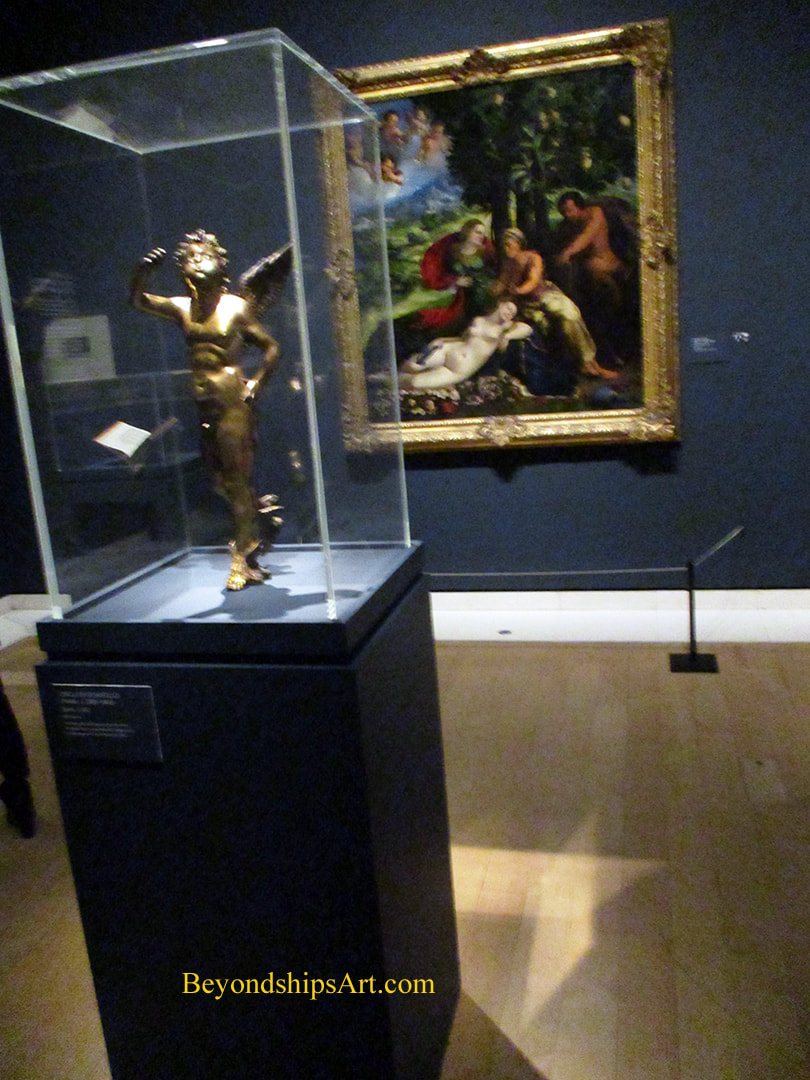"The Renaissance Nude" “The Renaissance Nude” at the Royal Academy of Art explored how the nude inspired and was used in Renaissance art. It presented some 90 works including paintings, scultures and drawings by artists such as Durer, Michelangelo, Titian, Leonardo and Raphael.
Art work depicting naked people was not invented in the Renaissance. Nudes were a stable of classical Greek and Roman art and were frequently used in primative art. However, during the Middle Ages, the nude, with a few exceptions, disappeared from European art. This began to change in the 15th century as Greek and Roman art was rediscovered. Thus, the modern origin of this subject dates from the Renaissance. The exhibition's exploration of this subject was divided into five thematic sections. First, the exhibition looked at “The Nude in Christian Art.” Stories from the Bible, such as Adam and Eve, required nude figures. In addition, the ideal nude figure was viewed as a symbol of God's perfection. Durer's detailed print “Adan and Eve” with its idealized figures is a prime example. Along the same lines, in “Beyond the Ideal Nude,” the exhibition showed that in depicting the lives and deaths of Christ and the saints, naked figures were used to convey various emotions such as torment, isolation and innocense. With the rediscovery of Classical culture there was a renewed interest in Classical modes of thinking. “Humanism and the Expansion of Secular Themes” showed how Renaissance artists used nudes to illustrate stories from Greek and Roman mythology. These stories provided an opportunity for artists to explore topics that were condemned by the Christian church. For example, in “Birth of Venus” Titian presented a desirable woman in the nude. If he had said it was a portrait of the woman who modeled for him, it would probably not have been acceptable.. But by saying it was a painting of a Roman goddess, the picture became acceptable. As interest in nudes grew, artists began to study the figure both from Classical sculptures and from life. Leonardo's anatomical drawings from the dissections he carried out are probably the best known examples in this area. However, Raphael's “The Three Graces” shows that artists also made nude drawings as studies for paintings they were planning. The final section, “Personalizing the Nude” looks at the way patrons sought to have nudes incorporated in the art they commissioned. For example, Isabella d”Este commissioned several nude paintings for her space in the ducal palace at Mantua. One of these, Perugino's “Combat between Love and Chastity” depicts a number of partially clad Roman gods fighting while others cavort in the background. In the Renaissance as today, the nude in art walks a fine line. Naked figures can be regarded as high-minded things of beauty as well as vehicles for illustrating emotions and the human condition. Other nudes can be regarded as pornographic.. Where to draw the line between what is acceptable and what is not, has been a subject of debate for centuries. For example, Michelangelo's “The Last Judgment” contains many nude figures. After his death, Pope Pius IV ordered that concealing draperies be painted over some of the figures. We tend to think of that order as an example of the narrow-minded prudishness of another time. However, some social media organizations today, concerned about possible objectification and exploitation, ban all nudes including those done for artistic purposes. While the motivation of today's digital Savonarolas is different than their Renaissance predecessors, the result is the same - - censorship. Thus, this exhibition was not just an exploration of a historic topic. As above, it is a topic that remains controversial today. Looking at how the nude came to be a tradition in Western art makes for a more enlightened debate. |
|
Art review - Royal Academy of Art (London) - “The Renaissance Nude"

